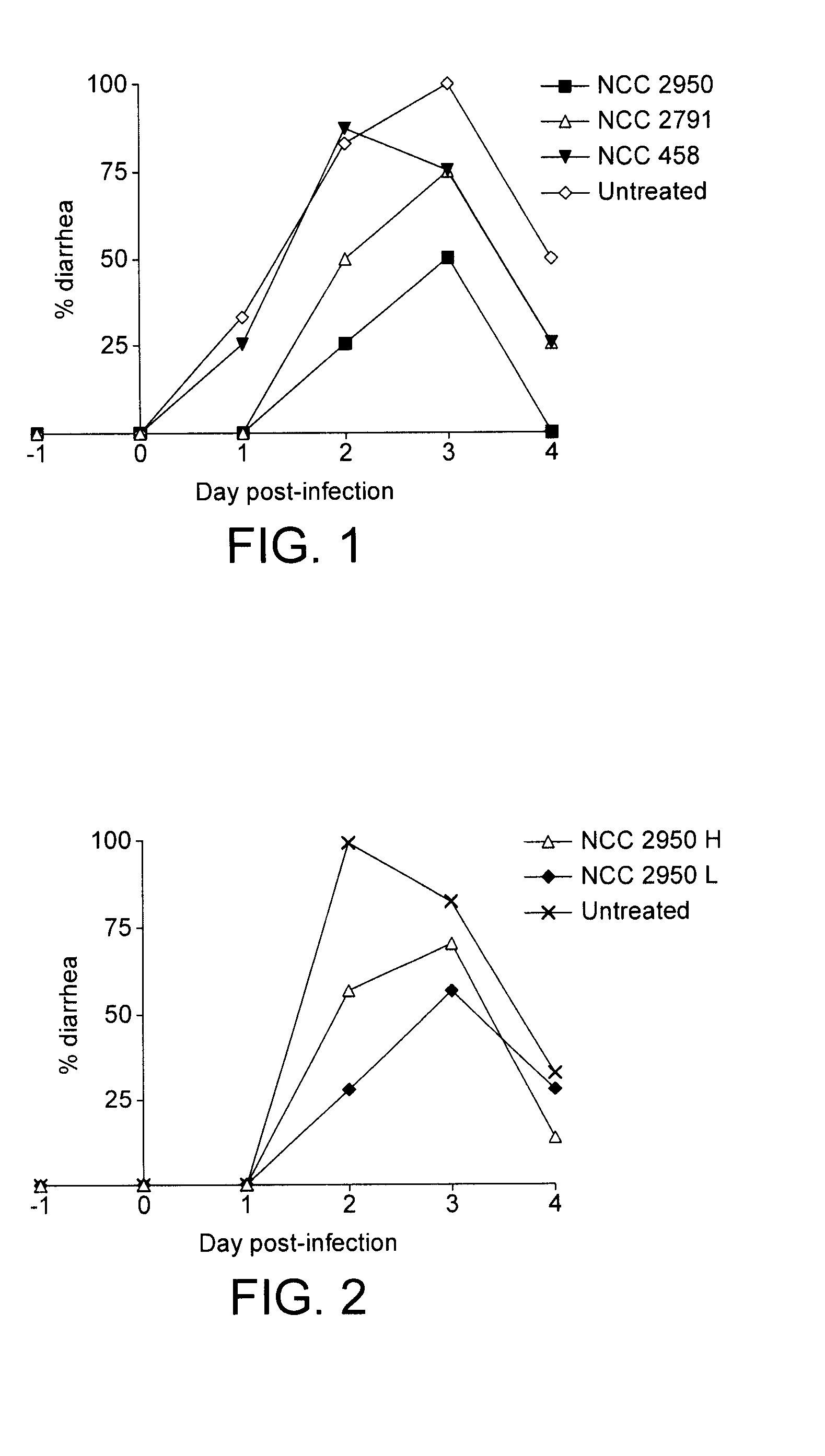Prevention and treatment of rotavirus diarrhoea
a technology of rotavirus and diarrhoea, which is applied in the field of prevention and treatment of rotavirus diarrhoea, can solve the problems of major drain on increasingly burdened healthcare budgets, major global threat to survival, and cost of rotavirus infection managemen
- Summary
- Abstract
- Description
- Claims
- Application Information
AI Technical Summary
Benefits of technology
Problems solved by technology
Method used
Image
Examples
example 1
[0033]An example of the composition of an infant formula according to the present invention is given below. This composition is given by way of illustration only.
Nutrientper 100 kcalper litreEnergy (kcal)100670Protein (g)1.8312.3Fat (g)5.335.7Linoleic acid (g)0.795.3α-Linolenic acid (mg)101675Lactose (g)11.274.7Prebiotic (70% FOS, 30% inulin) (g)0.644.3Minerals (g)0.372.5Na (mg)23150K (mg)89590Cl (mg)64430Ca (mg)62410P (mg)31210Mg (mg)750Mn (pg)850Se (μg)213Vitamin A (μg RE)105700Vitamin D (μg)1.510Vitamin E (mg TE)0.85.4Vitamin K1 (μg)854Vitamin C (mg)1067Vitamin B1 (mg)0.070.47Vitamin B2 (mg)0.151.0Niacin (mg)16.7Vitamin B6 (mg)0.0750.50Folic acid (μg)960Pantothenic acid (mg)0.453Vitamin B12 (μg)0.32Biotin (μg)2.215Choline (mg)1067Fe (mg)1.28I (μg)15100Cu (mg)0.060.4Zn (mg)0.755Bifidobacteriumbreve CNCM I-2.107 cfu / g of powder3865
example 2
[0034]This example compares the efficacy of three different strains of B. breve against rotavirus infection in mice. The particular mouse model was chosen for three reasons. First, in this model simian rotavirus not only caused intestinal rotavirus infection but also rotavirus diarrhoea. Second, the histopathology of the rotavirus effect on the murine intestinal mucosa resembles that described for rotavirus infected children. Third, this model has reproduced the greater and lesser effects achieved with different probiotic strains in clinical trials.
[0035]14 days pregnant BALB / c mice were purchased from MøRegard, Denmark. The mice were housed individually in the animal facility at the Karolinska University Hospital, Huddinge, Sweden. Bedding and nesting material, normal pellet diet and water were provided ad libitum. A 12:12 hours light:dark cycle was maintained. Pups were born at 19 to 20 days' gestation. Pups from a litter were randomised before being redistributed to different exp...
example 3
[0040]This example compares the efficacy of two different preparations of B. breve CNCM I-3865 against rotavirus infection in mice using the model described above in Example 2. In this example, there were two experimental groups and a control group. One experimental group received live bacteria resuspended in PBS at 10e10 cfu / ml (NCC 2950 L). The other experimental group received a similar bacterial preparation except that the preparation was heat-treated at 90° C. for 30 minutes prior to administration (NCC 2950 H). The control group received only the PBS medium. The results are shown in Table 3 and FIG. 2. It may be seen that a high infection rate was achieved in the control group where 100% of the animals had diarrhoea at day 2. Both experimental groups had reduced symptoms of diarrhoea when compared to the control group.
TABLE 3NCC 2950 HNCC 2950 LControlNo of values776Mean duration1.4291.1432.167SE duration0.29740.45920.3073Mean severity1.4291.4294
PUM
 Login to View More
Login to View More Abstract
Description
Claims
Application Information
 Login to View More
Login to View More - R&D
- Intellectual Property
- Life Sciences
- Materials
- Tech Scout
- Unparalleled Data Quality
- Higher Quality Content
- 60% Fewer Hallucinations
Browse by: Latest US Patents, China's latest patents, Technical Efficacy Thesaurus, Application Domain, Technology Topic, Popular Technical Reports.
© 2025 PatSnap. All rights reserved.Legal|Privacy policy|Modern Slavery Act Transparency Statement|Sitemap|About US| Contact US: help@patsnap.com

